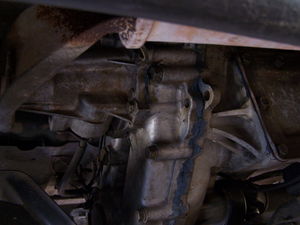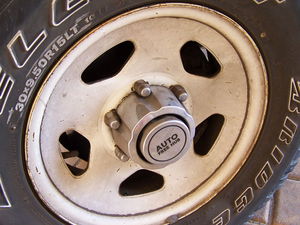.
Four Wheel Drive
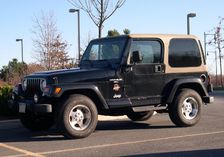
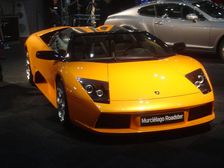
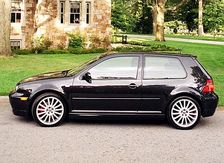
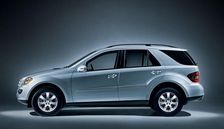
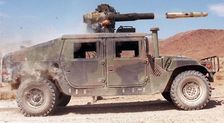
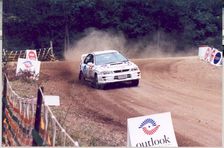
Four-wheel drive, 4WD, 4x4 ("four by four"), all wheel drive, and AWD are terms used to describe a four-wheeled vehicle with a drivetrain that allows all four wheels to receive power from the engine simultaneously. While many people think exclusively of off-road vehicles, powering all four wheels provides better control on slick ice and is an important part of rally racing on mostly-paved roads.
Four-wheel drive (4WD or 4x4 for short) was the original term, often used to describe truck-like vehicles that required the driver to manually switch between a two wheel drive mode for streets and a four-wheel drive mode for low traction conditions such as ice, mud, or loose gravel. The "all wheel drive" term (AWD for short) was invented to distinguish vehicles that are capable of driving all four wheels on normal roads without causing poor control and excessive tire and drivetrain wear. The AWD term is now being used to market vehicles which continuously drive all four wheels, but it is just a marketing term. They are just derivatives of 4WD systems. The terms are thus quite vague in modern usage.
The buyer must be wary. It is common for identical drivetrain systems to be marketed under different names for upmarket and downmarket branding, and also common for very different drivetrain systems to be marketed under the same name for brand uniformity. For example, both Quattro and 4motion can mean either an automatically engaging system with a Haldex clutch or a continuously operating system with a Torsen differential.
Glya08 <a href="http://xraxlowysjep.com/">xraxlowysjep</a>, [url=http://eslfvinyxkga.com/]eslfvinyxkga[/url], [link=http://uavnmppyhryy.com/]uavnmppyhryy[/link], http://ionsfrrslcxw.com/
History
The first-ever four-wheel drive car (as well as hill-climb racer), the so-called Spyker 60 HP, was built in 1903 by Dutch brothers Jacobus and Hendrik-Jan Spijker of Amsterdam. Designs for four-wheel drive in the US, came from the Twyford company of Brookville, PA in 1905. The first US four-wheel drive vehicle was built in 1911 by the Four-Wheel Drive auto company (FWD) of Wisconsin. FWD would later produce over 20,000 of its four-wheel drive Model B trucks for the British and American armies during World War I. It was not until "go-anywhere" vehicles were needed for the military that four-wheel drive found its place. The Jeep, originally developed by American Bantam but mass-produced by Willys and Ford, became the best-known four-wheel drive vehicle in the world during World War II. Willys (since 1950 owner of the Jeep name) introduced the CJ-2A in 1945 as the first full-production four-wheel drive passenger vehicle. Possibly beaten by the 1941 GAZ-61.
It was in 1948 that the vehicle whose name is synonymous with Four Wheel Drive in many countries was introduced. The Land Rover appeared at the Amsterdam Motor Show, originally conceived as a stop-gap product for the struggling Rover car company, and despite chronic underinvestment succeeded far better than the passenger cars. Land Rover pioneered the luxury 4WD with the Range Rover in the 70's, which unlike most subsequent offerings from other manufacturers, was genuinely capable of serious off-road use. Indeed, once a few years of depreciation had brought its price tag into the realm of the possible, many Range Rovers enjoy a new life as off-road competition vehicles. One startling snippet testifying to the durability of Land Rovers was when it was noted on the occasion of the marque's 50th anniversary in 1998 that over 70% of all Land Rovers ever built were still in use.
However, it was not until Jensen applied the Formula Ferguson four-wheel drive system to their 1966 Jensen FF that the system was used in a production sports car, but with a total of 320 build units this did not sell in appreciable numbers. The first manufacturer to develop four-wheel drive for road-going cars was Subaru, who introduced the mass-produced 4WD Leone in 1972. This model eventually became the best-selling 4WD car in the world. Audi introduced the first permanently all-wheel driven high volume road-going car, the Audi Quattro, in 1980. Audi's chassis engineer, Jörg Bensinger, had noticed in winter tests in Scandinavia that a vehicle used by the German Army, the Volkswagen Iltis, could beat any high performance Audi. He proposed developing a four-wheel drive car, soon used for rallying to improve Audi's conservative image, the resulting rally bred Audi Quattro was a famous and historically significant Rally car. This feature was also extended to Audi's production cars and is still available nowadays.
Some of the earliest mid-engined four-wheel drive cars were the various road-legal rally cars made for Group B homologation, such as the Ford RS200 made from 1984-1986. In 1989 niche maker Panther Westwinds created a mid-engined four-wheel drive, the Panther Solo 2. Today, sophisticated all wheel drive systems are found in many passenger vehicles and most exotic sports cars and supercars.
UsBmlB <a href="http://hmtzsuntnurw.com/">hmtzsuntnurw</a>, [url=http://mqihyonblomo.com/]mqihyonblomo[/url], [link=http://fvgqbdwuasgw.com/]fvgqbdwuasgw[/link], http://sisyfdittpxk.com/
Terminology
Although in the strictest sense, the term "four-wheel drive" refers to a capability that a vehicle may have, it is also used to denote the entire vehicle itself. In Australia, vehicles without significant offroad capabilities are often referred to as All-Wheel Drives (AWD) or SUVs, while those with offroad capabilities are referred to as "four-wheel drives". This term is sometimes also used in North America, somewhat interchangeably for SUVs and pickup trucks and is sometimes erroneously applied to two-wheel-drive variants of these vehicles.
The term 4x4 (read either four by four or four times four) is used to denote the total number of wheels on a vehicle and the number of driven wheels; it is often applied to vehicles equipped with either full-time or part-time four-wheel-drive. The term 4x4 is common in North America and is generally used when marketing a new or used vehicle, and is sometimes applied as badging on a vehicle equipped with four-wheel drive. Similarly, a 4x2 would be appropriate for most two-wheel-drive vehicles, although this is rarely used in the USA in practice. In Australia the term is often used to describe pickup trucks that sit very high on their suspension. This is to avoid the confusion that the vehicle might be a 4x4 because it appears to be otherwise suited to off-road applications. A 2×4, however, is unambiguously a piece of lumber.
Large American trucks with dual tires on the rear axles (also called duallys or duallies) and two driven axles are officially badged as 4x4s, despite having six driven wheels because the 'dual' wheels behave as a single wheel for traction purposes and are not individually powered. True 6x6 vehicles with three powered axles such as the famous "Deuce and a Half" truck used by the U.S. Army has three axles (two rear, one front), all of them driven. This vehicle is a true 6x6, as is the Pinzgauer, which is popular with defence forces around the globe.
Another related term is 4-wheeler (or four-wheeler). This generally refers to all-terrain vehicles with four wheels and does not indicate the number of driven wheels; a "four wheeler" may have two or four-wheel drive.
In the UK, the derogatory nickname "Chelsea tractor" is sometimes used to describe large privately owned four-wheel drive vehicles. The term originally applies mostly to Range Rovers but may also be applied to any similar large four-wheel-drive vehicle.
http://www.blogdope.com/accutane.html accutane spje http://www.treatanxietydisorder.net/ xanax 938087 http://meridiapills.com/ meridia gev http://www.librosyviajes.com/metoprolol.html metoprolol fly
Unusual four-wheel drive systems
Prompted by a perceived need for a simple, inexpensive all-terrain vehicle for oil exploration in North Africa, the French motor manufacturer Citroën developed the 2CV Sahara. Unlike other 4x4 vehicles which use a conventional transfer case to drive the front and rear axle, the Sahara had two engines, each independently driving a separate axle, with the rear engine facing backwards. The two throttles, clutches and gearchange mechanisms could be linked, so both 12 bhp 425 cc engines could run together, or they could be split and the car driven solely by either engine. Combined with twin fuel tanks and twin batteries (which could be set up to run either or both engines), the redundancy of two separate drive trains meant that they could make it back to civilization even after major mechanical failures. Only around 700 of these cars were built, and there are no clear records of how many still exist. Enthusiasts have built their own "new" Saharas, by rebuilding a 2CV and fitting the modified engine, gearbox and axle onto a new, strengthened chassis.
British Motor Corporation (BMC) experimented with a twin-engined Mini Moke in the mid-1960s, but never put it into production.
Suzuki Motors introduced the Suzuki Escudo Pikes Peak Edition in 1996. Though actually numbers were never released, this twin-engined vehicle is believed to weigh less than 2000 pounds and produce nearly 1000bhp. Each engine is twin-turbo charged 2.0L V6 mated to a sequential 6-speed manual transmission.
Most recently, DaimlerChrysler's Jeep Division debuted the twin engine, 670hp Jeep Hurricane concept at the 2005 North American International Auto Show in Detroit. Unique to this vehicle is its "crab crawl" cability, which allows it to rotate in 360 degrees in place, and its dual Hemi V8s.
See also
- Category:All wheel drive vehicles
- Sport Utility Vehicle
- Limited Slip Differential
- Front wheel drive
- Rear wheel drive
- FR layout
- MR layout
- RR layout
- Rock crawling
- Dune bashing
External links
- 4x4's and offroad vehicles in South Africa
